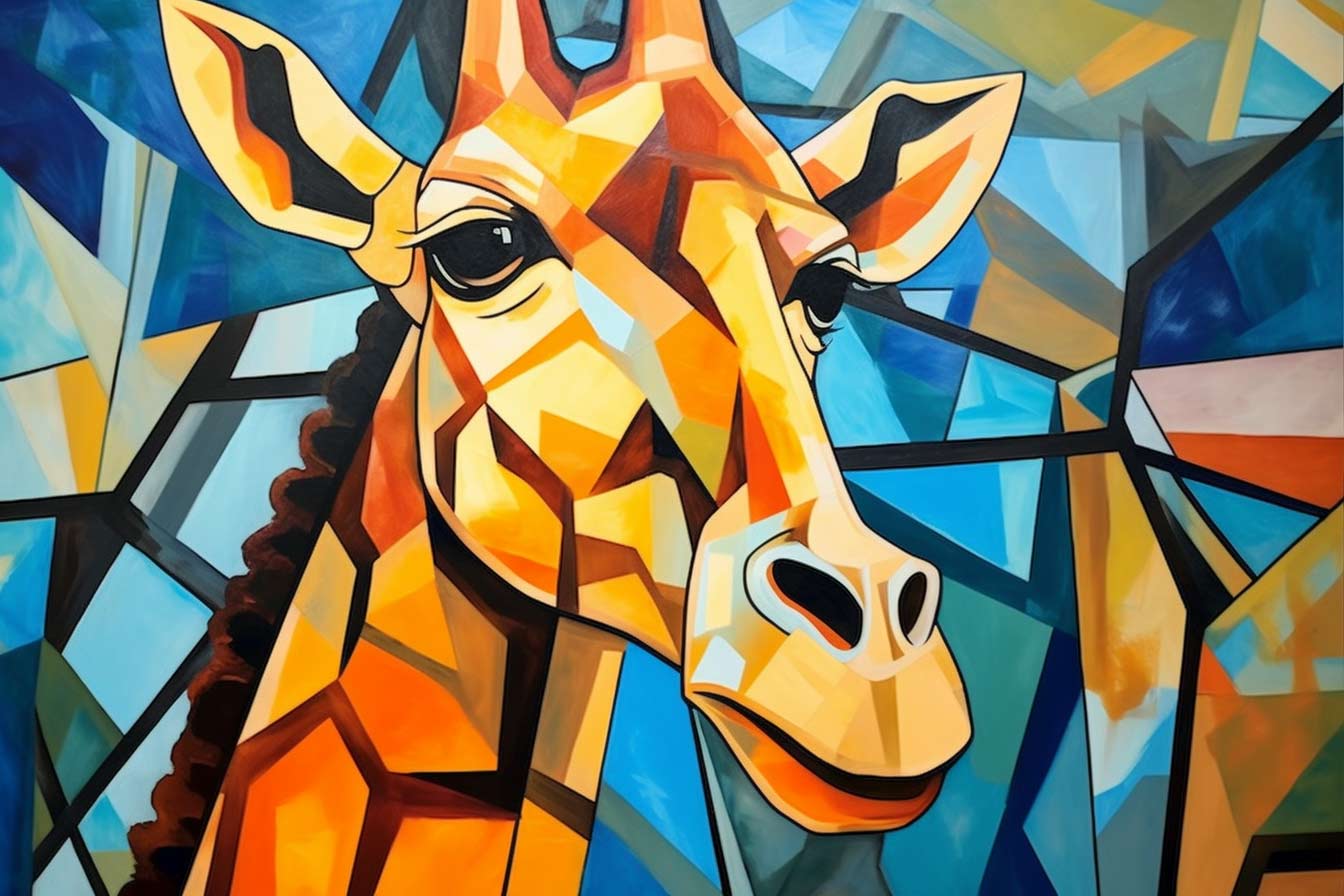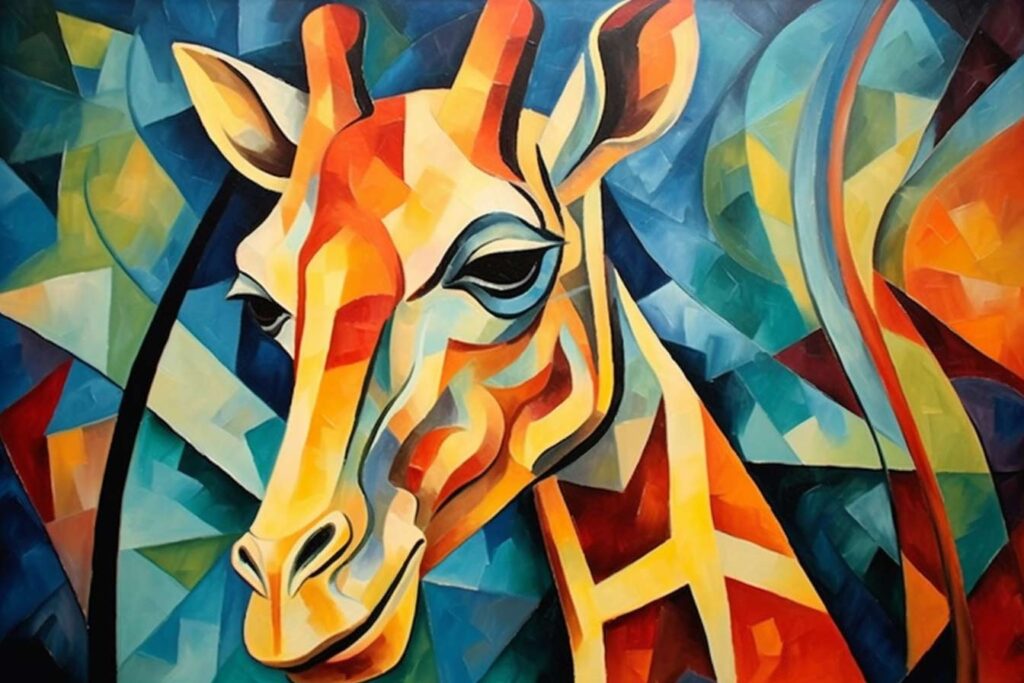The Celestial Reach of Form
In the hallowed halls of artistic pursuit, where the ink of yesteryears has scarcely dried, Cubism stands as a formidable chapter. This paradigm-shattering movement, begotten through the virtuosity of Georges Braque, unveils new facets of reality by cracking open the vault of visual convention. It is in this arena of groundbreaking discovery that we shall endeavor to immortalize the quintessentially lofty being—a giraffe—into the annals of Cubist legacy.
Analytical Cubism: Deconstructing the Towering Elegance
The dawn of our Cubist exploration arrives with the serene meticulousness of Analytical Cubism. The aim is no less than the disentangling of form, the breaking of visual symmetries into geometric riddles.
Step One: The Foundational Survey and Draft
Begin by casting your scrutinizing gaze upon your towering subject. Absorb not merely its spindly elegance but its primal geometry. Circles for its roaming eyes, parallelograms for its long neck, and cubes for its firm body—these are your building blocks. Commit these rudimentary forms to canvas in a preparatory sketch.
Step Two: A Fragmented Anatomy
Following the primary sketch, plunge into a finer partitioning. Visualize the giraffe as a kaleidoscopic entity, where each part serves as a node in a geometric network. Separate the long neck into truncated cylinders; imagine the spots as an array of uneven polygons; break down its elongated face into a sequence of intersecting planes.
Step Three: The Harmony of Angles
In Analytical Cubism, the canvas is not merely a surface but a cosmos of simultaneous viewpoints. Render your giraffe from various aspects: the side profile of its head, the foreshortened length of its legs, the bird’s-eye perspective of its mane—all coexisting in a narrative of intersecting planes.
Synthetic Cubism: The Alchemy of Unity
Upon dissecting comes the sublime task of synthesis. The mandate of Synthetic Cubism is not merely to assemble but to transmute, employing an alchemy of texture and form.
Step One: The Landscape of Hues
First, fashion a background that mirrors or contrasts the thematic resonance of your subject. The shades you choose should harmonize with the fragmented pieces of your giraffe, setting the stage for their grand unification.
Step Two: Materializing Imagination
Braque’s Synthetic Cubism revels in material diversity. Adorn your canvas with collaged elements—strips of newsprint to mimic the fur, fragments of textured paper for the spots, or fabric to evoke the sinews. Each material brings its voice to the choir of visual dialectics.
Step Three: The Symphony of Geometry
At last, merge your divided forms and mixed media into a revelatory whole. In this unified field, each geometric fragment and each texture swells into a comprehensive creature. Though abstract, the form should be unmistakably that of a giraffe, rendered not merely in shape but in a tapestry of visual complexity.
The Resonance of Form
And so, under the dictates of Analytical and Synthetic Cubism, you shall breathe into existence a work of manifold dimensions and resonances. Your giraffe, elevated from its natural grandeur to an abstract emblem, stands testament to the transforming power of Cubist ideology. Not merely a depiction of a creature, but a voyage through the fractured yet unified vistas of perception, your canvas serves as both a mirror and a window—reflecting the world, and transcending it.

All the works of art you see on this site have been created using artificial intelligence algorithms, capturing the essence and techniques of the great masters of Cubism.
